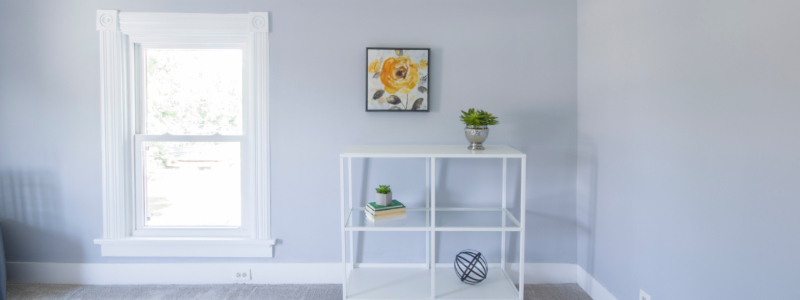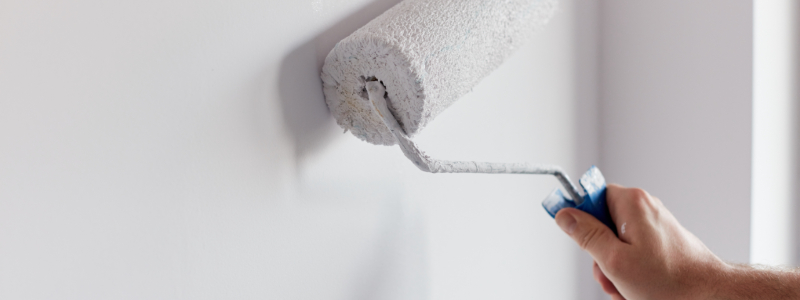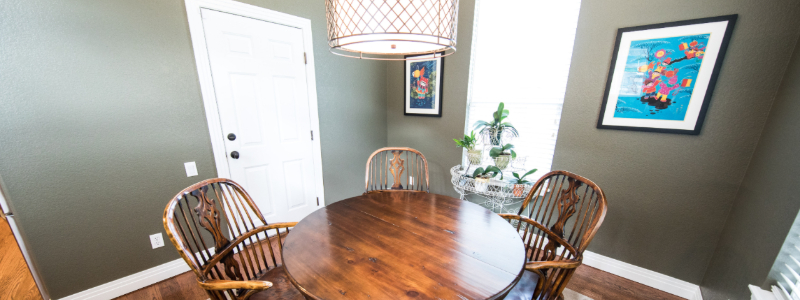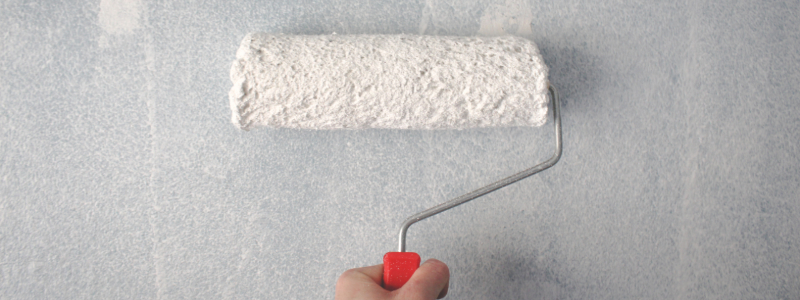Adding some fresh paint to a room can completely change the look and the feel of the space. Even more than furniture, carpet, or accessories, the paint on the walls and ceilings can shape the entire perception of a room. Interior painting can really transform your home when done correctly. For this reason, we usually recommend the best way to save time and money to hire a reputable professional painting company.
However, if you choose to move forward with the DIY route, then there are some interior painting techniques you should know. Whether you’re just creating an accent or totally redoing the walls, ceiling, and trim, make sure you have a solid plan in place before you start. It sounds as easy as choosing a color and splashing paint on, but being careless can really cost you in the long run. All it takes is a minor error or oversight to make the entire room look worse, and then your project will start all over again.
But don’t stress out! Getting a new paint job is a fun and exciting time.
Consider the following interior painting techniques before you begin painting your house.

How Not to Paint
First, let’s cover exactly what you shouldn’t do. Don’t head to the store, grab a paint that looks nice, then go home and start slathering it on in any old spot with that brush you’ve had sitting in the garage all these years.
You can always just paint over it, right? Wrong. Sometimes you’ll have a lot of work to remove a bad paint job not to mention it can get costly pretty quickly. Instead, make sure your colors, materials, and equipment are all planned out before you start the interior painting work.
Take your time choosing a color you like and properly prepare the room.
Start with a Clean Slate
The first step is one of the most important, but it’s often overlooked: make sure to clean and dry all the surfaces you’re going to be painting. If they’re dirty, wet, or moldy, the paint won’t last very long before it starts to peel or otherwise look bad. Cleaning or washing walls ensure an even coat and will prevent any blistering or bubbling in your paint. This is extremely important to interior painting techniques simply because it ensures the longevity of the paint job. Some of the industries leading painters, like Colorado Painting, ensure that this portion of the job is done correctly.
Once it’s clean, make sure to sand any rough areas, and use caulk or putty to patch any holes. Also, any dirt and grime on the walls can cause uneven surfaces that will stick out like a sore thumb when you’re finished.
Use Proper Equipment
Second, you need to make sure you can paint like a professional, which means having the right equipment. It’s more than just a brush and an old shirt, you’ll need a good deal of equipment.
Here’s a basic shopping list to stock up on at the paint store:
- Rollers
- Smaller brushes
- Paint tray
- Putty and caulk for holes
- Sandpaper
- Paint buckets and hooks
- Ladder
- Drop cloth
- Tape for the trim
- Old clothes
- Gloves and glasses (optional)
If this seems like a lot to purchase, remember that having the right tools will help you succeed at the job at hand and prevent you from making costly mistakes. Professional painters are always willing to assist when needed. Contact us for a free estimation of your interior paint job.
Don’t Pinch Pennies
As you feel the price starting to add up on your DIY project, it can be tempting to simply buy cheap equipment and paint. After all, “I’ll only use this brush once.” Those famous last words are said by many people who forget that they’re going to be living with this paint job from now on.
High-quality paint and professional-grade equipment cost more because they do a better job. The skill of using them and the time it takes to tackle the project can only go so far. When you’re spending time in your beautiful new room, you’ll realize it was money well spent.
Ensure Paint is Even
This sounds obvious, but it’s one of the most common mistakes made by amateur painters. The trick is to have a roller with enough paint on it and to roll the entire height of the surface in one smooth motion. Every time you stop or adjust speeds or levels of paint, you risk creating varying edges and thicknesses.
It’s tempting to think that you’ll never even notice these imperfections once they dry, but you will. A little difference really sticks out on an otherwise perfectly smooth wall.
Mix Several Cans of Paint
You’ll buy the paint in smaller cans, but you’ll want to put it into a big bucket to limit spilling and fit your rollers. A pro tip is to mix all your cans together in the bucket, and then put them back in their individual cans. If you buy them all at the same time from a quality paint store, they should be the exact same shade. But even so, this will prevent subtle differences in the shade around your room (which can be extremely noticeable in certain lighting).
This also goes along with knowing how many cans of paint to buy. If you’re not sure, get a few extras to make sure it matches. You can always use that for touch up or to add a little thickness, if needed.
Follow the Right Order
Generations of painters have learned the there is a right order and a wrong order to tackling your paint projects. Start with the trim because that’s easiest to cover up with tape once you’re finished. Next, move to the ceiling so you’ll get any stray drips out of the way early on. Finally, hit those walls (where most people are tempted to start!).
Think About the Finish
Everyone spends a lot of time worrying about the color and shade of their paint, but many forget to consider the impact the finish is going to have. Do you want shiny or matte? If you want something glossier, how much? Very glossy? Semi-glossy? Are you looking for any special texture?
Also, how is the dry paint going to feel? Consider the risk of ending up with something sticky. Not only can this look bad, but it also holds dust and dirt easier.
These decisions have lasting effects on how the room looks and feels, and they all require different prep work.
Deciding on Expert Help
These tips are just a drop in the bucket of the knowledge you need for a solid paint job. While you may be looking forward to the fun of painting your interior rooms, one of the biggest reasons for DIY is cost. Many people get partially through their project and realize they’re not enjoying it as much as they thought, so it’s wise to consider your overall goals before you begin.
If you want a fun new hobby that may save some money, the DIY route is a good choice. On the other hand, if you want to increase the value of your house with a premium look, consider going pro. A bad paint job can downgrade a home, and it causes frustration to anyone who poured their heart and soul into trying to make something beautiful.
Don’t hesitate to reach out to us if you need any advice or would like a quote for painting the interior rooms of your home.


































